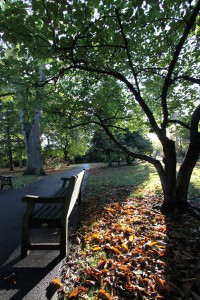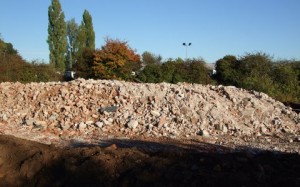Support us from £3/month
We deal with almost 1000 cases a year assisting communities, groups and individuals in protecting their local spaces and paths in all parts of England and Wales. Can you help us by joining as a member?
We have made a bid to save unconsidered scraps and patches of land from development and neglect.
Responding to the government’s proposal for ‘a new designation to protect green areas of particular importance to local communities’(1) the society points out that these are likely to be small and often not very green─but of great value in areas of dense development where there is no other open space nearby.
The society has published A framework for green space setting out what it believes the new designation should achieve.
Kate Ashbrook, our general secretary, says: ‘These will be bits of land which have got under the radar of existing protective designations. They won’t be registered commons or town and village greens; and they won’t be in protective ownership, such as by the National Trust or Woodland Trust. But they will be important to people who live close by: kids will kick balls about on them, dogs will be walked on them and sometimes flowers will bloom on them.
‘For all these sorts of reasons they need to be protected and we look to the government’s new designation to do that.’
The society stresses that the designation needs to be simple, transparent and robust.
Says Kate: ‘Ideally there should be a straightforward registration process overseen by the local authority, capable of being initiated at any time either by a number of individuals, owners or tenants of adjoining property, or by local authorities including parish councils.
‘Registration must guarantee permanent protection against adverse development, it must place on the registering local authority a duty to protect the land, and it must provide the essential supporting powers of enforcement, through the courts if necessary.
‘However, it is vital that this designation does not replace the existing process for registering land as a new town or village green where it fulfils the relevant requirements, ie it has been used by local people for 20 years for informal recreation, without being stopped and without permission. We have separately proposed improvements to that process, which involve amending the regulations and practice but not the law.’
The society has written to Eric Pickles, Secretary of State for Communities and Local Government, and Caroline Spelman, Secretary of State for Environment, Food and Rural Affairs (both departments are committed to creating the new designation for green spaces), setting out its blueprint for green spaces with examples, provided by our members from throughout England, of green spaces which urgently need the new designation to secure their protection. These are of all types—urban, rural, large and small. The examples include:
• Harlington, near Dunstable in Bedfordshire
• Sidmouth in Devon
• Loughton in Essex
• Testwood, near Totton in Hampshire
• Love Lane Green, London Borough of Croydon
• Gunnersbury Park, London Borough of Hounslow
• Natural History Museum, London Borough of Kensington and Chelsea
• King’s Stairs Gardens, Rotherhithe, London Borough of Southwark
• Marie Louise Gardens, West Didsbury, Manchester
• Etling, East Dereham, Norfolk
• Harding’s Pit, King’s Lynn, Norfolk
• Bulwell Hall Park, Nottingham
• Ilketshall St Andrew, Beccles, Suffolk
• Horsham, West Sussex
The society also sets out examples of good practice among local authorities, citing Leicestershire County Council and Elmbridge Borough Council in Surrey.
1. The Department for Communities and Local Government (DCLG), and the Department for Environment, Food and Rural Affairs (Defra) included in their Structural Reform Plans a commitment to ‘develop proposals for a new designation to protect green areas of particular importance to local communities’ (due from DCLG by end March 2011). This has still not been done, but a consultation is expected shortly.


